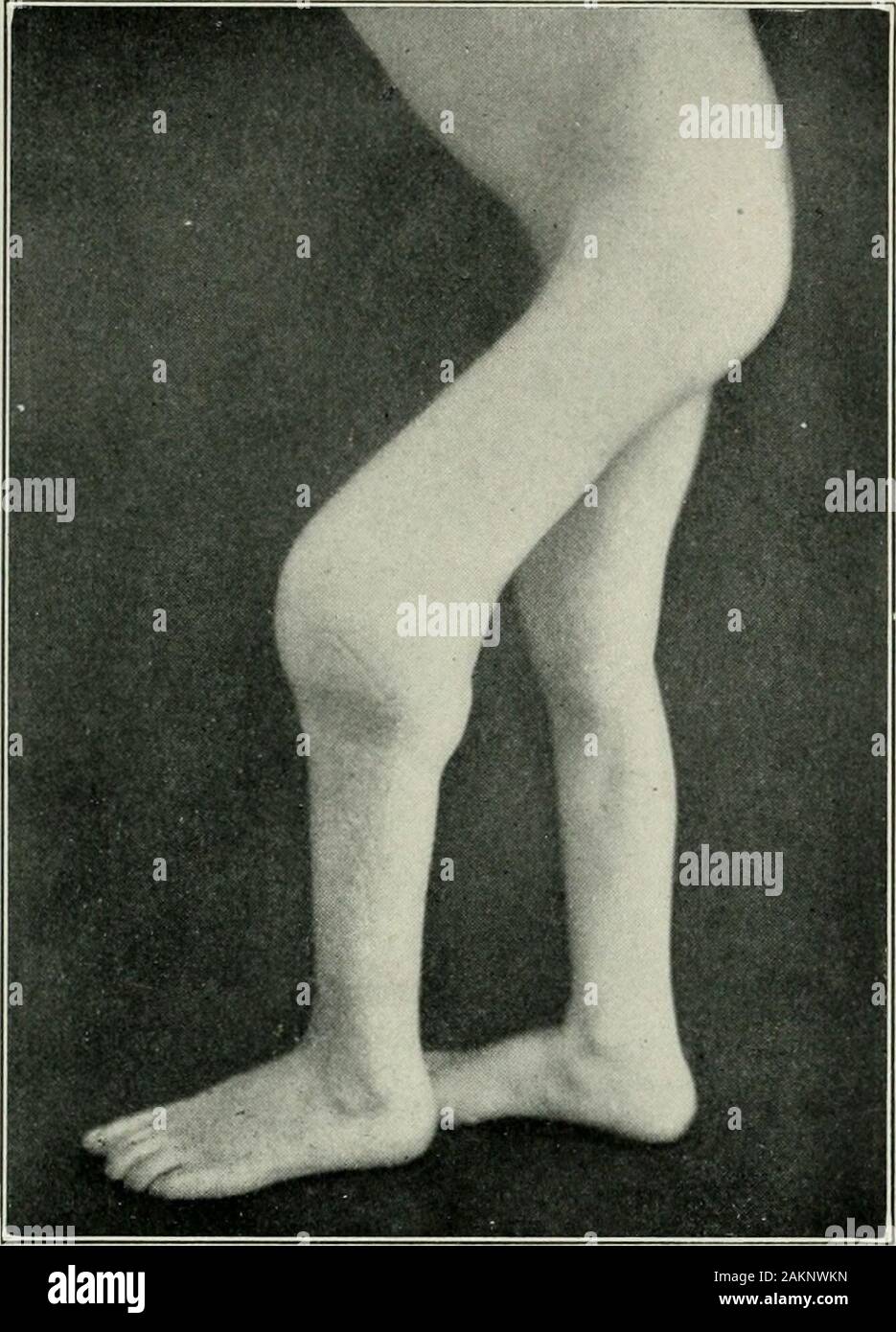American practice of surgery : a complete system of the science and art of surgery . e have a clinical picturepresented which is very characteristic. In cases in which the synovial mem-brane is involved—and in most instances, where at all events the disease has notbeen checked at an early stage in its development, this structure is affected— TUBERCULOUS DISEASE OF BONES AND JOINTS. 693 knee will present a fusiform shape which is in marked contrast with the nor-mal contour of the parts above the joint. The bony prominences, which arevisible upon the sound side, have been effaced; the depression

Image details
Contributor:
The Reading Room / Alamy Stock PhotoImage ID:
2AKNWKNFile size:
7.1 MB (364.3 KB Compressed download)Releases:
Model - no | Property - noDo I need a release?Dimensions:
1341 x 1863 px | 22.7 x 31.5 cm | 8.9 x 12.4 inches | 150dpiMore information:
This image is a public domain image, which means either that copyright has expired in the image or the copyright holder has waived their copyright. Alamy charges you a fee for access to the high resolution copy of the image.
This image could have imperfections as it’s either historical or reportage.
American practice of surgery : a complete system of the science and art of surgery . e have a clinical picturepresented which is very characteristic. In cases in which the synovial mem-brane is involved—and in most instances, where at all events the disease has notbeen checked at an early stage in its development, this structure is affected— TUBERCULOUS DISEASE OF BONES AND JOINTS. 693 knee will present a fusiform shape which is in marked contrast with the nor-mal contour of the parts above the joint. The bony prominences, which arevisible upon the sound side, have been effaced; the depressions on the lateralaspects of the patella are obliterated; and the circumferential measurementsare found to be increased. These conditions are seen in Figs. 291 and 292, which represent tuberculous disease in the knee in a child three years of age. The faulty attitude assumed at the knee in tuberculous disease consists offlexion, -as is the case in other joints similarly affected. The amount of flexionmay not be great, perhaps ten degrees, but it is found impossible completely to. Fig. 291.—Tuberculous Disease of the Knee Joint in a Child Three Years of Age, Showing the Charac-teristic Fusiform Enlargement of the Knee and the Attitude of Flexion. (Original.) extend the joint. It is therefore obvious that there is a limitation of movement, and this is not only true of extension, but also of flexion, for we find that com-plete flexion, which should permit the heel to come back against the buttock, is impossible. Any attempt to bring the joint into a position of complete flexionor complete extension is resisted by muscular contraction. At later stagesof the disease, when the ligaments become infiltrated and lax, a varyingdegree of actual deformity is produced at the knee. The flexion persists whilethe head of the tibia is drawn backward by the hamstring muscles and rotatedoutward. This deformity is very characteristic, and is quite constantly presentin progressive disease unless m